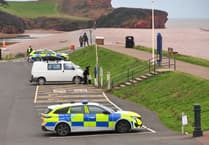AN area of land in Mary Tavy has been designated a conservation area by Dartmoor National Park Authority, due to its architectural and historic surroundings.
The new conservation area includes part of Blackdown and land to the south east of the village including Mary Tavy Power Station.
Terry Pearce, chairman of Mary Tavy Parish Council and mayor of West Devon, said a number of people have believed Mary Tavy should have been designated a conservation area around 30 years ago, along with other communities.
He said: 'The parish council has been involved in this project for the last three years.
'It was really hard work to get to where we are now as the research and the appraisal for it took a long time to complete.
'This means that anyone who wants to build has to make sure that it blends in with the area and if people want to cut down trees they will have to get permission to do so.
'We are proud as a parish council that this has taken place.'
The oldest part of Mary Tavy, probably dating back to at least the 14th century, was initially formed by farmsteads and cottages scattered along the valley of the Cholwell Brook, with the church at its focus.
The later settlement of Blackdown became part of the village and each area played an integral and important part in the historical development of Mary Tavy, both being interspersed with mine workings, for which Mary Tavy is well known.
An important archaeological feature, which can still be seen on Blackdown, is the King Way, so called as it was the Tavistock to Okehampton section of the route between London and Plymouth, through which the King's mail passed.
The earliest reference to mining appears in 1740 and is that of the Wheal Friendship mine.
This was the best known and richest copper mine on Dartmoor with a longer history than any other in Devon or Cornwall, working from most probably the late 17th century to 1925.
A draft conservation appeal appraisal produced in February 2008 analysed the character of the built environment, which includes a wide range of building types from the 14th century parish church to the 20th century hydropower station, together with the contribution made by the open spaces, street furniture and archaeological heritage.
Keith McKay, the historic buildings officer for DNPA, said there were now 23 conservation areas in West Devon, which include Lydford, Brentor, Horrabridge, Meavy and Princetown.
He said: 'It is the historic interest due to the mining, the King Way and the early origin around the church which is why part of Mary Tavy has been designated a conservation area, to ensure the area is preserved and enhanced.'
Dartmoor National Park Authority approved the proposal as of Friday, August 1.



